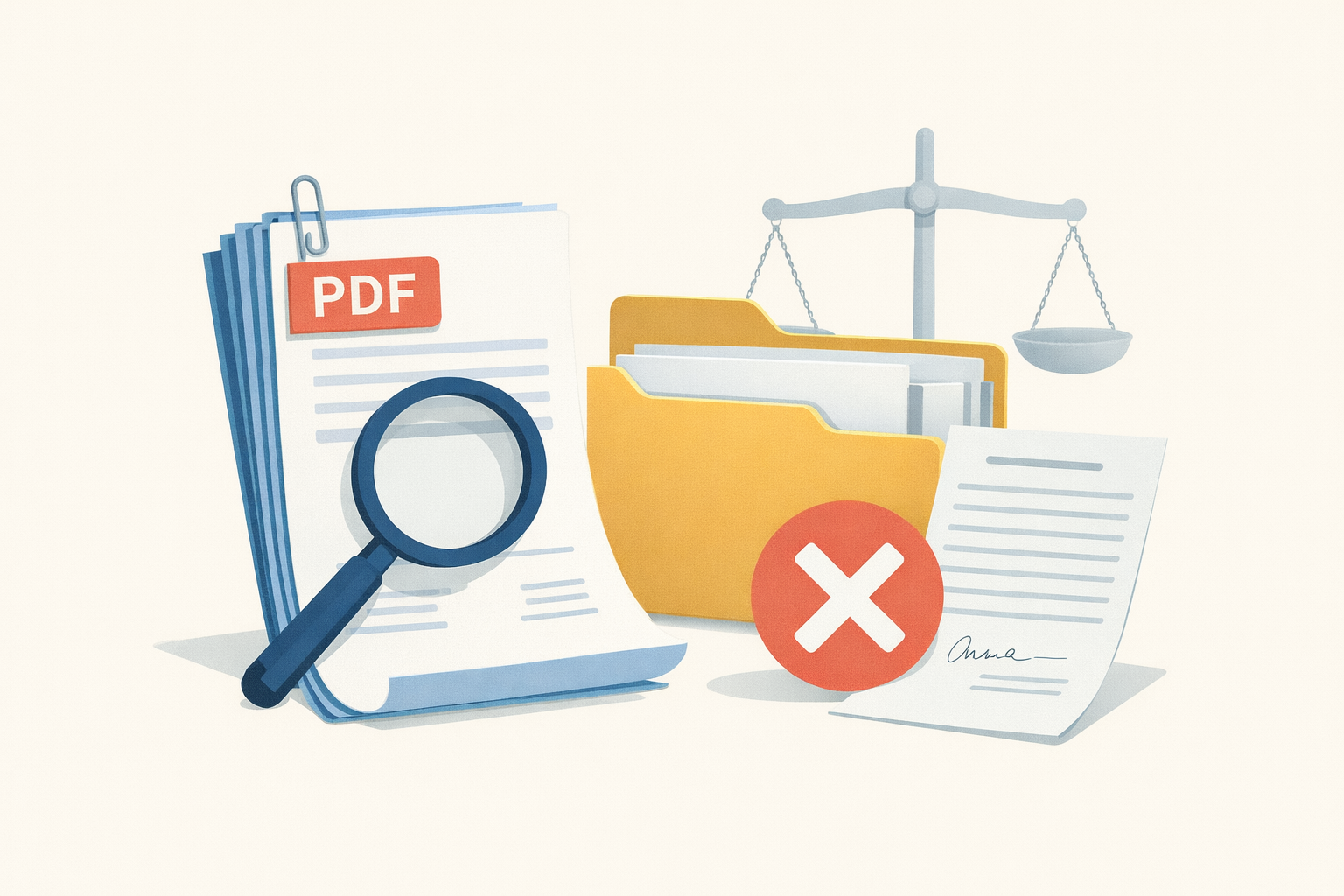It's important for document review to be done correctly. Some common mistakes include neglecting technology, using inconsistent practices, overlooking quality control, and ignoring metadata. Using reliable tools is a great way to help you avoid such mistakes.
In the world of modern litigation, document review is where accuracy, speed, and technology intersect. With massive data volumes and tight deadlines, even experienced attorneys can fall prey to costly errors that compromise legal strategy and client trust.
Understanding what document review is and how to perform it effectively is essential for maintaining credibility and compliance. This article breaks down the top five mistakes lawyers make in document review, along with document review tips to help you avoid these pitfalls using smarter workflows, robust legal document review platforms, and cloud-based document redaction software.
What Is a Document Review in Research?
At its core, document review in the legal and research contexts involves the meticulous examination of written records, including:
- Emails
- Contracts
- Reports
- Communications
The goal is to identify relevant information, assess privilege, and ensure confidentiality. In litigation, the process determines what evidence can be disclosed during discovery. In research, document review evaluates the quality, consistency, and credibility of data sources.
For legal teams, document review goes deeper than reading. It's about judgment, organization, and compliance. Understanding the purpose and scope of review helps teams avoid common lawyer errors, such as overlooking privileged information or failing to maintain version control.
What Are the Responsibilities in a Document Review?
A successful legal document review requires lawyers and reviewers to take on multiple responsibilities. These typically include:
- Relevance determination: Deciding whether documents are relevant to the case.
- Privilege assessment: Identifying materials protected by the attorney-client privilege or work product.
- Confidentiality checks: Ensuring sensitive client or third-party information remains protected.
- Redaction: Applying document redaction best practices to remove confidential or personal data before disclosure.
- Quality control: Using peer review and analytics to validate accuracy and consistency.
Each of these responsibilities carries potential pitfalls if executed without precision or technological support. That's where legal document review platforms like Logikcull can make a difference by automating organization, flagging duplicates, and reducing manual errors.
What Should Be on a Document Review Checklist?
Before diving into a review, every team should have a document review checklist to keep the process structured and defensible. Key items include:
- Data collection confirmation: Verify that data sources are complete and properly preserved.
- Search term validation: Test and refine keyword searches for accuracy.
- Privilege tagging rules: Define criteria for labeling privileged and confidential documents.
- Redaction protocols: Specify when and how to redact sensitive information using cloud-based document redaction software.
- Quality assurance steps: Scheduling periodic sampling and audits is key to enhancing legal accuracy.
This checklist acts as your quality compass, ensuring faultless document analysis and mitigating the legal document pitfalls that often lead to disputes or sanctions.
Five Mistakes Lawyers Make During Document Review
Document review can be complex. Some mistakes are fairly easy to make, so it's important to be aware of them.
1. Neglecting Technology
Many firms still rely on outdated manual methods for managing discovery. Without a modern legal document review platform, reviewers waste valuable hours sorting, tagging, and cross-referencing files. Automated review tools and AI-driven search capabilities dramatically reduce human error while improving turnaround time.
How to avoid: Invest in reliable cloud-based document redaction software, such as Logikcull, that integrates review, redaction, and audit trails seamlessly.
2. Inconsistent Redaction Practices
Improper or inconsistent redactions are among the most common lawyer errors during review. Missing a single identifier (such as a client's Social Security number or internal communication) can expose firms to data breaches or confidentiality violations.
How to avoid: Establish document redaction best practices early. Use standardized templates and automated redaction tools that ensure sensitive data is consistently removed across documents.
3. Failing to Define Relevance Early
When teams don't clearly define relevance criteria, reviewers may waste time analyzing immaterial data or miss key documents altogether. This not only slows the review process but also introduces risk if critical evidence is overlooked.
How to avoid: Create a clear document review checklist and maintain open communication between litigation counsel and review teams to align on relevance and privilege standards.
4. Overlooking Quality Control
Skipping peer review or random sampling is a surefire way to let mistakes slip through. Even experienced reviewers can misclassify documents under time pressure, leading to inconsistent production sets.
How to avoid: Implement multi-layered quality control using automated analytics and human oversight. Regular audits ensure you're maintaining faultless document analysis throughout the project.
5. Ignoring Metadata
Metadata, such as timestamps, authors, and edit histories, often contains crucial evidence. Failing to preserve or analyze metadata can weaken your case or violate eDiscovery obligations.
How to avoid: Use legal document review platforms that automatically preserve metadata integrity, enabling more accurate and defensible document production.
Frequently Asked Questions
How Do Legal Document Review Platforms Help?
Platforms like Logikcull automate much of the manual review process, providing smart filters, tagging, and redaction tools. This minimizes common errors and ensures defensible, efficient document production.
What Are the Best Practices for Document Redaction?
Follow a standardized redaction policy, automate where possible, and always verify redacted versions before disclosure. Using cloud-based document redaction software ensures consistent, audit-ready redactions.
How Can Teams Ensure Faultless Document Analysis?
Combine AI-powered tools with robust human oversight. Use checklists, perform regular quality checks, and maintain complete documentation of all review activities to guarantee transparency and accuracy.
Why Do Lawyers Still Make Document Review Mistakes?
Time pressure, lack of training, and overreliance on manual processes are the main causes. Leveraging automation and standardized protocols is the most effective way to prevent legal document pitfalls and maintain client trust.
Reliable Document Review
Document review doesn't have to be a bottleneck or a liability. By understanding the common pitfalls and embracing advanced legal document review platforms, firms can transform an error-prone process into a model of faultless document analysis. From automated redaction to smart search and metadata preservation, the right tools help lawyers avoid common errors and deliver better outcomes.
With Logikcull, you won't need to worry about manual redaction, legacy tools, or waiting around for vendors. More than 1,500 organizations use our platform, and we have hundreds of 5-star reviews, showing how happy our clients are.
Test out our free trial now to see how we can help you succeed.




